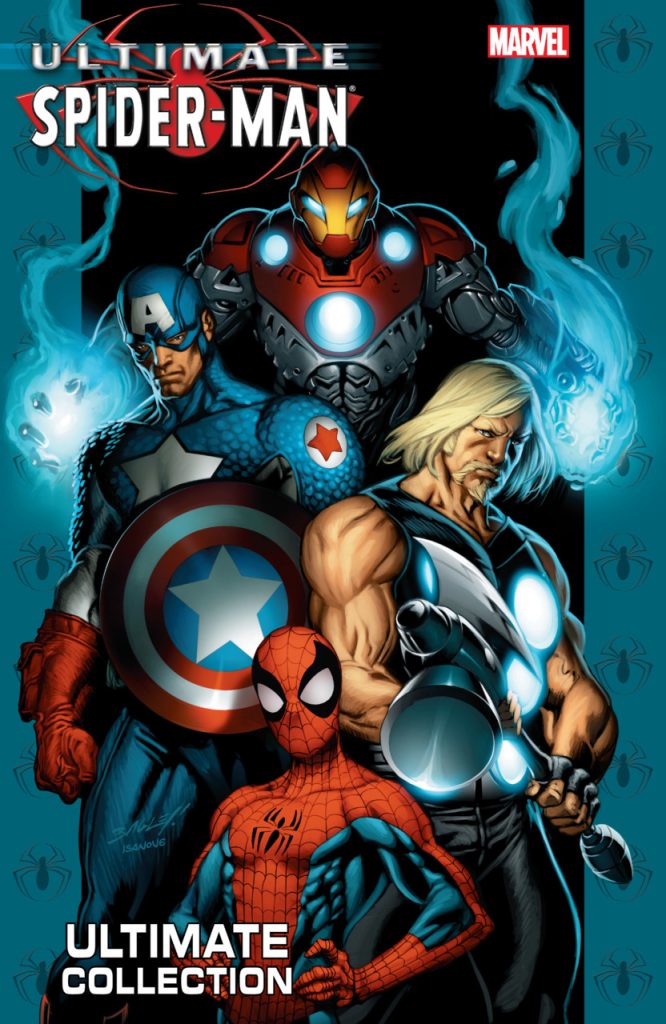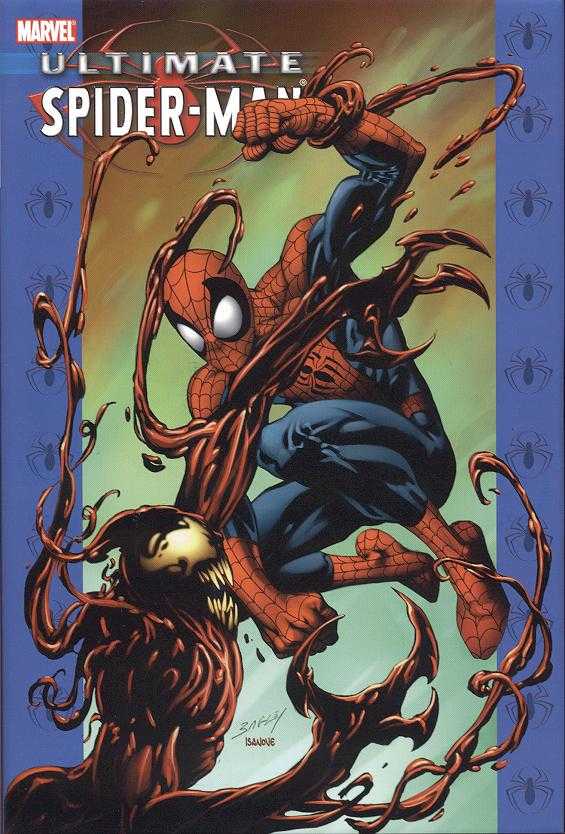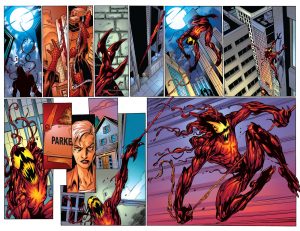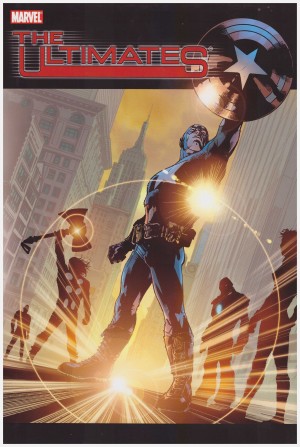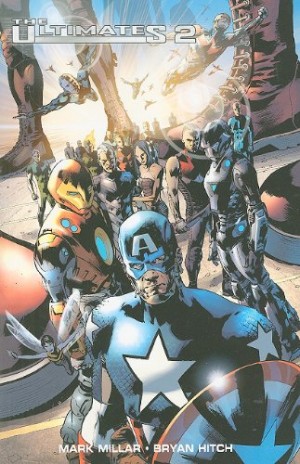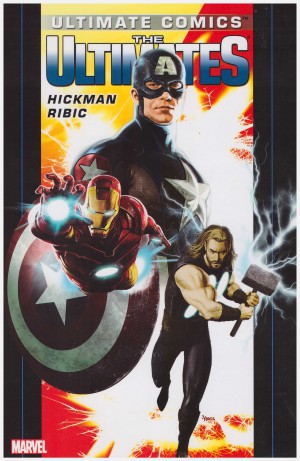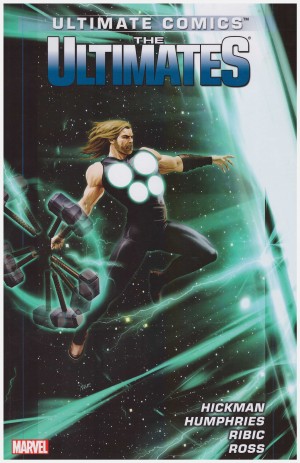Review by Frank Plowright
While there were a few question marks hanging over portions of the previous Complete Collection or Ultimate Spider-Man hardcover (depending on which format you’re following), this is back to solid entertainment. Rather than being the usual format of two stories combined, it’s one longer piece followed by several shorter stories about Spider-Man interacting with other superheroes.
The Human Torch turning up at Peter Parker’s school is a lot of fun, not least because he’s a superhero who doesn’t really bother concealing their identity when interacting with the high school students, which has a charm. A Doctor Strange in training mixed in with illusions of a nightmare world doesn’t rate as highly, although it gives Mark Bagley the opportunity to experiment a little with the art, changing his style for a few pages at a time and conceiving a nice effect for the main villain. We’re teased with the Ultimates on a cover reproduction, but their presence is just a cameo, meaning the Wolverine story is the best of this selection. Bendis starts with the improbable idea of Spider-Man and Wolverine each waking up in the other’s body, and by the end he’s supplied a valid reason for that. Each has to become used to what the other can do, and with Peter on a final warning, Wolverine has to attend school, which goes as well as you might imagine. It’s a comedy treat, yet still featuring viable action.
Before any of that we’re introduced to the Carnage of the Ultimate universe, the result of which makes the following light relief very welcome. It’s a slow build-up to tragedy, this Carnage developed from combining a sample of Peter’s blood with other genetic material, the ethical consequences never contemplated by a research scientist excited by the possibilities. As well as the plot being first rate, it also removes one of Bendis’ writing comforts, as Carnage is silent, so unusually for anything written by Bendis, there are multiple scenes with minimal or no dialogue as we watch Carnage going about his business. Bagley comes up with a suitably creepy modified design, with J. D. Smith’s colouring important in cementing the impact, and if any underlining of his storytelling abilities is required, there’s never any doubt about what’s happening on the pages without captions. Bagley’s art also looks far better from here on out because the inking is given to different people. Here it’s Scott Hanna, who’s far more sympathetic to what Bagley’s doing and avoids unnecessary extra lines.
The midway point is Bendis’ homage to The Breakfast Club, with Peter and several of his classmates given detention and inevitably discussing what’s happened in their lives. It’s a neat idea, but doesn’t come off as intended because the character mix doesn’t quite work. As insights into the individuals, though, it works just fine.
If preferred, these stories were previously collected in slimmer paperbacks as Carnage and Superstars.
